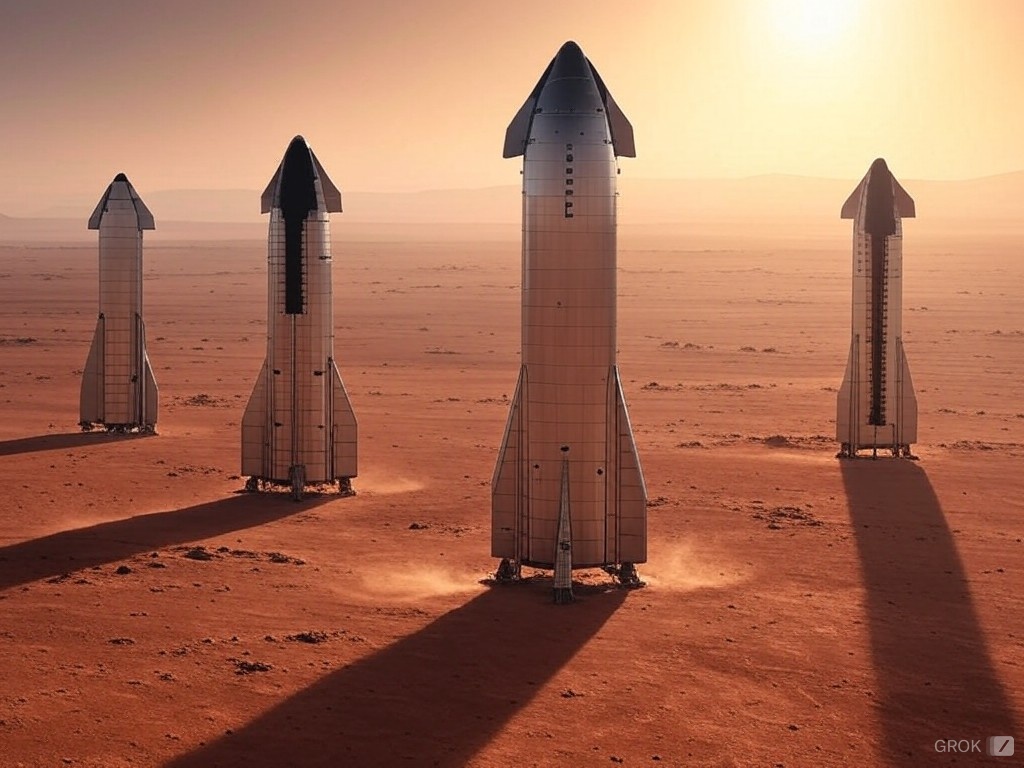SpaceX Starship: A Realistic Mars Colonization Timeline?
SpaceX's Starship program has ignited the imagination, promising a future where humanity becomes a multi-planetary species. But when can we realistically expect to see humans setting foot on Mars thanks to this ambitious project? The answer, as with most ambitious space endeavors, is complex and depends on several interwoven factors. Let's delve into the current state of Starship development and explore a plausible timeline for Martian colonization.
Starship Development: Current Status and Challenges
The Starship program is currently in a crucial phase of development and testing. While significant progress has been made, numerous challenges remain before regular, reliable flights to Mars become a reality.
Key Hurdles:
- Full Stack Integration and Testing: Successfully integrating the Starship's various components – the Super Heavy booster and the Starship spacecraft itself – and rigorously testing the entire system is paramount. Failures, like those experienced in early test flights, are expected, but learning from these failures and achieving consistent success is key.
- Reusable Rocket Technology: SpaceX's vision relies heavily on the reusability of both the Starship and Super Heavy. Achieving rapid turnaround times for reflight is essential for reducing the overall cost of space travel and making Mars colonization economically feasible. This requires significant advancements in rapid refurbishment techniques.
- In-Space Refueling: A journey to Mars requires immense fuel. The current plan involves refueling in Earth orbit, a complex logistical undertaking that demands further development and testing of in-space refueling procedures. This is a crucial step for longer missions.
- Life Support Systems: Sustaining human life during a multi-year Mars mission requires robust and reliable life support systems. These systems must efficiently recycle air, water, and waste, while protecting the crew from the harsh Martian environment. Extensive testing in simulated Martian conditions is crucial.
A Plausible Mars Colonization Timeline
Given the current progress and the challenges outlined above, a realistic timeline for establishing a permanent human presence on Mars is likely to stretch beyond the often-quoted projections. While SpaceX aims for a crewed mission in the near future, establishing a self-sustaining colony is a far more complex undertaking.
Short-Term Goals (Next 5-10 years):
- Successful Starship Orbital Flights and Reusability: Consistent successful launches and landings of the Starship are essential. This stage focuses on demonstrating the reliability and reusability of the system.
- Lunar Missions: Before venturing to Mars, a series of lunar missions using Starship could serve as crucial testing grounds for long-duration spaceflight and resource utilization in a challenging environment. This would validate many crucial technologies.
- In-Space Refueling Demonstrations: Successful demonstrations of in-space refueling are a critical milestone, demonstrating the feasibility of this crucial component of a Mars mission.
Mid-Term Goals (Next 10-20 years):
- Uncrewed Mars Missions: Sending robotic missions to Mars to conduct scientific research, scout potential landing sites, and test infrastructure deployment technology.
- Crewed Mars Flybys & Orbital Missions: Sending crewed missions to Mars for flybys or short orbital missions will allow for crucial testing of human systems and exploration of the Martian environment.
- Initial Surface Missions: Short-duration crewed missions to the Martian surface, focused on establishing a basic foothold and conducting scientific research.
Long-Term Goals (20+ years):
- Establishing a Permanent Base: Constructing a permanent base on Mars capable of supporting a larger crew and conducting more extensive research and exploration.
- Resource Utilization (ISRU): Developing and implementing in-situ resource utilization (ISRU) technologies to produce fuel, oxygen, water, and building materials on Mars, reducing reliance on Earth.
- Self-Sustaining Colony: The ultimate goal is to establish a self-sustaining colony on Mars, able to reproduce and maintain itself independently of Earth.
Conclusion: A Long-Term Vision
The colonization of Mars is a monumental undertaking that will require sustained effort, significant technological advancements, and substantial investment. While SpaceX's Starship represents a giant leap forward, the timeline for achieving a permanent human presence on Mars remains a long-term project, extending well into the future. Regular monitoring of SpaceX's progress and updates on Starship development are essential to better understand the evolving timeline and the challenges faced in making this ambitious dream a reality.
Keywords: SpaceX Starship, Mars Colonization, Mars Mission, Space Exploration, Reusable Rocket, In-Space Refueling, Colonization Timeline, Space Travel, Martian Exploration, SpaceX Mars, SpaceX Starship Updates
